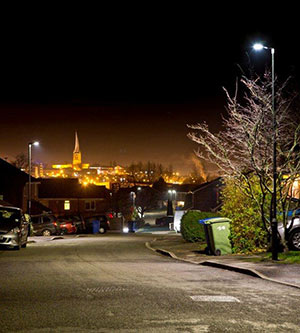
We've done this to support efforts to meet carbon reduction targets and reduce maintenance and energy costs. LED lights are expected to last for 100,000 hours or 20 to 25 years. This is much longer than the 15,000 to 20,000 hours (3 to 4 years) of other streetlights, so we've benefited from lower maintenance costs.
There are big energy savings of around 60% in comparison with traditional streetlights and, unlike old-fashioned lights, LEDs can be dimmed when light is not needed, resulting in additional energy savings.
There are several other benefits of LED streetlights:
- they make colours look more natural, and LED streetlights are better for security and CCTV cameras
- LEDs don't contain the harmful chemicals found in traditional lights such as mercury and sodium
- there are fewer lamp changes than with traditional lights which means less waste, reduced fuel used to service the lights and reduced congestion through fewer roadworks
- LEDs emit light in a specific direction, which provides uniform lighting, meaning there is less wasted light
We also adapt light levels in most locations unless a reduced level of lighting wouldn't be appropriate. Light levels are at their lowest between midnight to 5am and we don't reduce light levels below 50% of their total output.
The amount we pay per unit of electricity has gone up on average by 15% per year since 2015 due to increases in electricity prices. As LEDs use less electricity and require less maintenance there will be a good recovery of the capital investment costs in the next few years.
This has been a unique opportunity for us to improve the street lighting we're responsible for and has redefined how we operate and manage street lighting in Derbyshire.